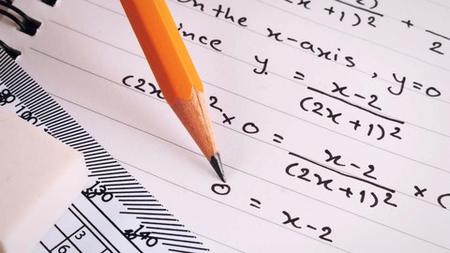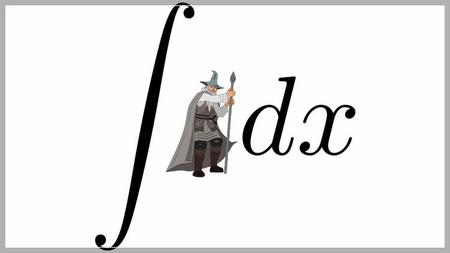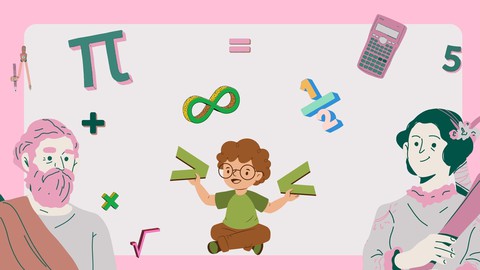
Discrete Mathematics - Sets, Relations & Functions
Posted on 08 May 05:34 | by LeeAndro | 25 views

Published 05/2022MP4 | Video: h264, 1280x720 | Audio: AAC, 44.1 KHz, 2 ChGenre: eLearning | Language: English + srt | Duration: 57 lectures (9h 11m) | Size: 8.6 GB
Introduction
Sets and their Representations
The Empty Set
Finite and Infinite Sets
Equal Sets
Subsets
Power Set
Universal Set
Venn Diagrams
Operations on Sets
Complement of a Set
Practical Problems on Union and Intersection of Two Sets
Types of Relations
Types of Functions
Composition of Functions and Invertible Function
Binary Operations
Basic knowledge of mathematics of 9th and 10th std Mathematics
Sets
Sets and their representations
Empty set
Finite and Infinite sets
Equal sets.
Subsets
Subsets of a set of real numbers especially intervals (with notations)
Power set
Universal set
Venn diagrams
Union and Intersection of sets
Difference of sets
Complement of a set
Properties of Complement Sets
Practical Problems based on sets
Relations & Functions
Ordered pairs
Cartesian product of sets
Number of elements in the cartesian product of two finite sets
Cartesian product of the sets of real (up to R x R)
Definition of −
Relation
Pictorial diagrams
Domain
Co-domain
Range of a relation
Function as a special kind of relation from one set to another
Pictorial representation of a function, domain, co-domain and range of a function
Real valued functions, domain and range of these functions −
Constant
Identity
Polynomial
Rational
Modulus
Signum
Exponential
Logarithmic
Greatest integer functions (with their graphs)
Sum, difference, product and quotients of functions
SUMMARY
Sets - This chapter deals with some basic definitions and operations involving sets. These are summarised below
1. A set is a well-defined collection of objects. A set which does not contain any element is called empty set.
2. A set which consists of a definite number of elements is called finite set, otherwise, the set is called infinite set.
3. Two sets A and B are said to be equal if they have exactly the same elements.
4. A set A is said to be subset of a set B, if every element of A is also an element of B. Intervals are subsets of R.
5. A power set of a set A is collection of all subsets of A. It is denoted by P(A).
6. The union of two sets A and B is the set of all those elements which are either in A or in B.
7. The intersection of two sets A and B is the set of all elements which are common. The difference of two sets A and B in this order is the set of elements which belong to A but not to B.
8. The complement of a subset A of universal set U is the set of all elements of U which are not the elements of A.
9. For any two sets A and B, (A ∪ B)′ = A′ ∩ B′ and ( A ∩ B )′ = A′ ∪ B′
10. If A and B are finite sets such that A ∩ B = φ, then n (A ∪ B) = n (A) + n (B). If A ∩ B = φ, then n (A ∪ B) = n (A) + n (B) – n (A ∩ B)
Relations & Functions - In this chapter, we studied different types of relations and equivalence relation, composition of functions, invertible functions and binary operations. The main features of this chapter are as follows
1. Empty relation is the relation R in X given by R = φ ⊂ X x X.
2. Universal relation is the relation R in X given by R = X x X.
3. Reflexive relation R in X is a relation with (a, a) ∈ R ∀ a ∈ X.
4. Symmetric relation R in X is a relation satisfying (a, b) ∈ R implies (b, a) ∈ R.
5. Transitive relation R in X is a relation satisfying (a, b) ∈ R and (b, c) ∈ R implies that (a, c) ∈ R.
5. Equivalence relation R in X is a relation which is reflexive, symmetric and transitive.
6. Equivalence class[a] containing a ∈ X for an equivalence relation R in X is the subset of X containing all elements b related to a.
7. A function f : X → Y is one-one (or injective) if f(x1 ) = f(x2 ) ⇒ x1 = x2 ∀ x1 , x2 ∈ X.
8. A function f : X → Y is onto (or surjective) if given any y ∈ Y, ∃ x ∈ X such that f(x) = y.
9. A function f : X → Y is one-one and onto (or bijective), if f is both one-one and onto.
10. The composition of functions f : A → B and g : B → C is the function gof : A → C given by gof(x) = g(f(x)) ∀ x ∈ A.
11. A function f : X → Y is invertible if ∃ g : Y → X such that gof = IX and fog = IY.
12. A function f : X → Y is invertible if and only if f is one-one and onto.
Complete Mathematics for Eeering Entrance Exam Preparation. ( IIT-JEE Main | Advanced | BITSAT | SAT | etc.)
State Board | CBSE | ICSE | IGCSE | Course for High School & College
Courses are suitable for students from over 160 countries from Europe, America, Middle East, Asia, Africa and APAC. Notably England, Germany, France, Sweden, Ireland, Scotland, USA, Canada, UAE, Saudi, Qatar, Kuwait, Malaysia, Indonesia, Myanmar, Newzealand, Australia, South Africa, South Korea, ria, Nepal, Sri Lanka, etc
HomePage:
https://anonymz.com/https://www.udemy.com/course/discrete-mathematics-sets-relations-functions/DOWNLOAD
uploadgig.com
https://uploadgig.com/file/download/e6177645406Aff65/Discrete_Mathematics.part01.rar
https://uploadgig.com/file/download/e748A7DfD5cd5ac0/Discrete_Mathematics.part02.rar
https://uploadgig.com/file/download/33aC9842911be156/Discrete_Mathematics.part03.rar
https://uploadgig.com/file/download/4Ae39a90fd9f815a/Discrete_Mathematics.part04.rar
https://uploadgig.com/file/download/d9D94117A32A93f7/Discrete_Mathematics.part05.rar
https://uploadgig.com/file/download/44696bA2c41c4774/Discrete_Mathematics.part06.rar
https://uploadgig.com/file/download/b8F44571f3f06a33/Discrete_Mathematics.part07.rar
https://uploadgig.com/file/download/39c5c5d6b92234a1/Discrete_Mathematics.part08.rar
https://uploadgig.com/file/download/b7abA41dA887bf33/Discrete_Mathematics.part09.rar
rapidgator.net
https://rapidgator.net/file/1f1ce87b6cd1fb95304d59f9d166986c/Discrete_Mathematics.part01.rar.html
https://rapidgator.net/file/7cb125c3a8007235285144b0903fa7c6/Discrete_Mathematics.part02.rar.html
https://rapidgator.net/file/0cd9c5ca7994bc2900477229643e26df/Discrete_Mathematics.part03.rar.html
https://rapidgator.net/file/c88151951eba8b5292d3be241407b6cc/Discrete_Mathematics.part04.rar.html
https://rapidgator.net/file/3c758ab4b85d5fdda039ec587f30e240/Discrete_Mathematics.part05.rar.html
https://rapidgator.net/file/cfc4b82cd0b6c0ce9311b7d6673b8957/Discrete_Mathematics.part06.rar.html
https://rapidgator.net/file/ced745053c9b3ef8bdc23f96dfedbd85/Discrete_Mathematics.part07.rar.html
https://rapidgator.net/file/d016f0aeb862de33e8220a4e4909be50/Discrete_Mathematics.part08.rar.html
https://rapidgator.net/file/5dbe1a24be382a028366f02ff9141c31/Discrete_Mathematics.part09.rar.html
nitro.download
https://nitro.download/view/B69F61F82F6F1BC/Discrete_Mathematics.part01.rar
https://nitro.download/view/CF6057DAE393EB6/Discrete_Mathematics.part02.rar
https://nitro.download/view/F340751082F0FEF/Discrete_Mathematics.part03.rar
https://nitro.download/view/E5E93D679A99171/Discrete_Mathematics.part04.rar
https://nitro.download/view/41C05CDA1D0F1F6/Discrete_Mathematics.part05.rar
https://nitro.download/view/C50016F2EC37822/Discrete_Mathematics.part06.rar
https://nitro.download/view/08F39F46543A552/Discrete_Mathematics.part07.rar
https://nitro.download/view/6624D7CB58CF7B9/Discrete_Mathematics.part08.rar
https://nitro.download/view/F32F1DA322FD298/Discrete_Mathematics.part09.rar
Related News
System Comment
Information
 Users of Visitor are not allowed to comment this publication.
Users of Visitor are not allowed to comment this publication.
Facebook Comment
Member Area
Top News



